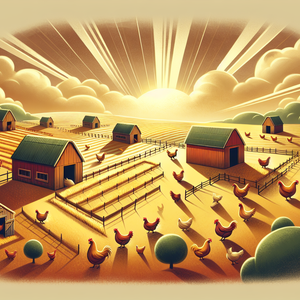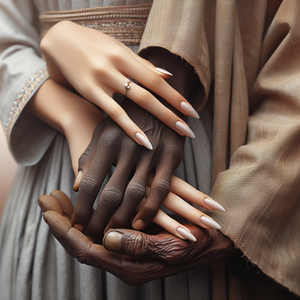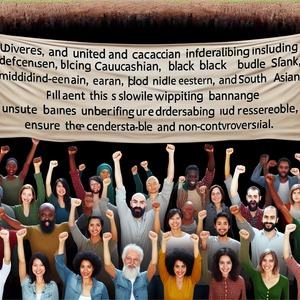The Rise of Synthetic Creativity: A New Era for Creative Industries

Generative AI refers to AI systems capable of creating original content—including images, music, text, and videos—based on patterns learned from vast datasets. Tools like OpenAI’s DALL·E, MidJourney, and ChatGPT are at the forefront of this movement, and their capabilities are nothing short of revolutionary.
Art and Design
Generative AI has already made its mark on the visual arts. AI-generated images have appeared in art galleries, advertising campaigns, and book covers. For example, Coca-Cola’s recent advertising campaign featured AI-generated artwork as a centerpiece, demonstrating the technology’s ability to inspire bold, new creative directions. Similarly, graphic designers are increasingly using AI tools to quickly generate multiple design variations, enabling them to focus on refining and personalizing the final product.
Music and Literature
In the music industry, synthetic creativity is redefining composition. Artists like Holly Herndon and Arca have embraced AI to craft experimental soundscapes that blend human input with machine-generated elements. In literature, generative AI tools help writers overcome creative blocks by drafting story outlines, suggesting plot twists, or even generating dialogue. What once required hours of brainstorming can now be accomplished in minutes with AI assistance.
Democratization of Creativity
One of the most exciting aspects of generative AI is its potential to democratize creativity. High-quality content creation, once limited to those with years of training or expensive tools, is now accessible to anyone with an internet connection. Small businesses, independent creators, and hobbyists can produce professional-grade work using AI tools, leveling the playing field in industries previously dominated by elite professionals.
Human-AI Collaboration or Competition?
The rise of synthetic creativity raises a fundamental question: should generative AI be seen as a collaborator that enhances human creativity, or as a competitor that threatens to replace it?
AI as a Creative Partner
Proponents of generative AI argue that it is best viewed as a tool that complements human creativity. By automating repetitive tasks—such as generating multiple design concepts or brainstorming story ideas—AI allows creators to focus on higher-level decision-making and personal expression. For instance, a songwriter might use an AI tool to generate chord progressions or melodies, then build upon those foundations with their unique artistic flair.
Fears of Replacement
Critics warn that as generative AI becomes more sophisticated, there may be an over-reliance on machine-generated content, potentially stifling originality. Furthermore, AI lacks the emotional depth and lived experience that often define human creativity. While an AI can compose a technically flawless piece of music, for instance, it may struggle to evoke the nuanced emotions that resonate deeply with human audiences.
The Ethical Challenges of Synthetic Creativity
The rise of generative AI also brings with it a host of ethical challenges, many of which remain unresolved.
Intellectual Property and Ownership
One of the thorniest issues is intellectual property (IP). Who owns the rights to AI-generated content? Is it the user who provides the prompts, the organization that developed the AI, or the AI system itself? This question has sparked legal disputes and remains a gray area.
Training Data and Consent
Generative AI systems are trained on massive datasets, often scraped from the internet without the consent of original creators. This practice has led to backlash from artists, writers, and other creators who argue that their work is being used to train AI systems without acknowledgment or compensation.
Bias and Stereotypes
AI systems are only as unbiased as the data they are trained on. Unfortunately, training datasets often contain subtle (and sometimes explicit) biases, which can result in AI-generated content that perpetuates stereotypes or cultural prejudices.
The Future of Creativity in an AI-Driven World
The rise of synthetic creativity is not a fleeting trend—it represents a fundamental shift in how we think about content creation. Moving forward, the key will be to strike a balance between human ingenuity and machine efficiency.
Education and Adaptation
To thrive in this new era, creators must learn how to work alongside AI. Schools and training programs should focus on integrating AI tools into creative disciplines, teaching students how to leverage these technologies while maintaining their unique voices.
Policy and Regulation
Policymakers and industry leaders must address the ethical and economic challenges posed by generative AI. This includes developing clear guidelines for intellectual property, ensuring creators are fairly compensated, and implementing safeguards to mitigate bias in AI-generated content.
The rise of synthetic creativity is a double-edged sword, offering both incredible opportunities and significant challenges. Generative AI has the potential to democratize creativity, streamline workflows, and inspire entirely new forms of artistic expression. Yet, it also raises pressing questions about authenticity, ethics, and the value of human labor. Ultimately, the goal should not be to frame AI as a competitor to human creativity but as a collaborator. By embracing this partnership, we can unlock a future where creativity knows no bounds—human or otherwise. The challenge lies in navigating this uncharted territory responsibly, ensuring that the benefits of generative AI are shared equitably while preserving the irreplaceable essence of human imagination.
AI Creative Specialist
Advertising agencies, media companies (e.g., Ogilvy, WPP), and tech startups exploring AI-driven content
Responsibilities
Develop creative content (e.g., visuals, music, or text) using generative AI tools like DALL·E, MidJourney, or ChatGPT.
Collaborate with marketing, design, or content teams to refine AI-generated outputs into polished final products.
Stay updated on the latest advancements in generative AI tools and techniques to improve creative workflows.
Generative AI Product Manager
Tech companies like Adobe, Canva, OpenAI, or startups building AI-focused products
Responsibilities
Define the strategy and roadmap for AI-based creative tools or platforms, ensuring alignment with user needs and business goals.
Collaborate with developers, data scientists, and designers to enhance AI models for creative applications like image generation, video synthesis, or text composition.
Conduct user research to understand market demands and identify new opportunities in synthetic creativity.
AI Ethics & Policy Consultant
Consulting firms (e.g., McKinsey, Deloitte), government agencies, or NGOs focused on AI ethics
Responsibilities
Advise organizations on ethical considerations surrounding generative AI, including intellectual property rights, diversity, and bias mitigation.
Develop frameworks for responsible AI use in creative industries, balancing innovation with ethical responsibility.
Analyze AI-generated content for compliance with legal and regulatory standards, especially concerning training data and copyright.
Creative Data Curator
AI research labs (e.g., Google DeepMind, Stability AI), universities, or companies developing creative AI solutions
Responsibilities
Curate, clean, and annotate datasets for training generative AI systems, ensuring datasets are diverse, representative, and ethically sourced.
Work closely with AI researchers and developers to provide high-quality data that improves model performance for creative outputs.
Manage copyright and licensing agreements for training data to ensure compliance with legal standards.
Human-AI Collaboration Designer
UX design firms, software companies building creative tools (e.g., Figma, Autodesk), or innovation labs
Responsibilities
Design workflows and tools that enhance collaboration between humans and AI in creative projects, such as co-writing scripts or co-designing graphics.
Conduct user testing to identify pain points in human-AI interactions and refine tools to improve usability and effectiveness.
Focus on creating intuitive, user-friendly interfaces for non-technical creators to adopt AI tools seamlessly.


